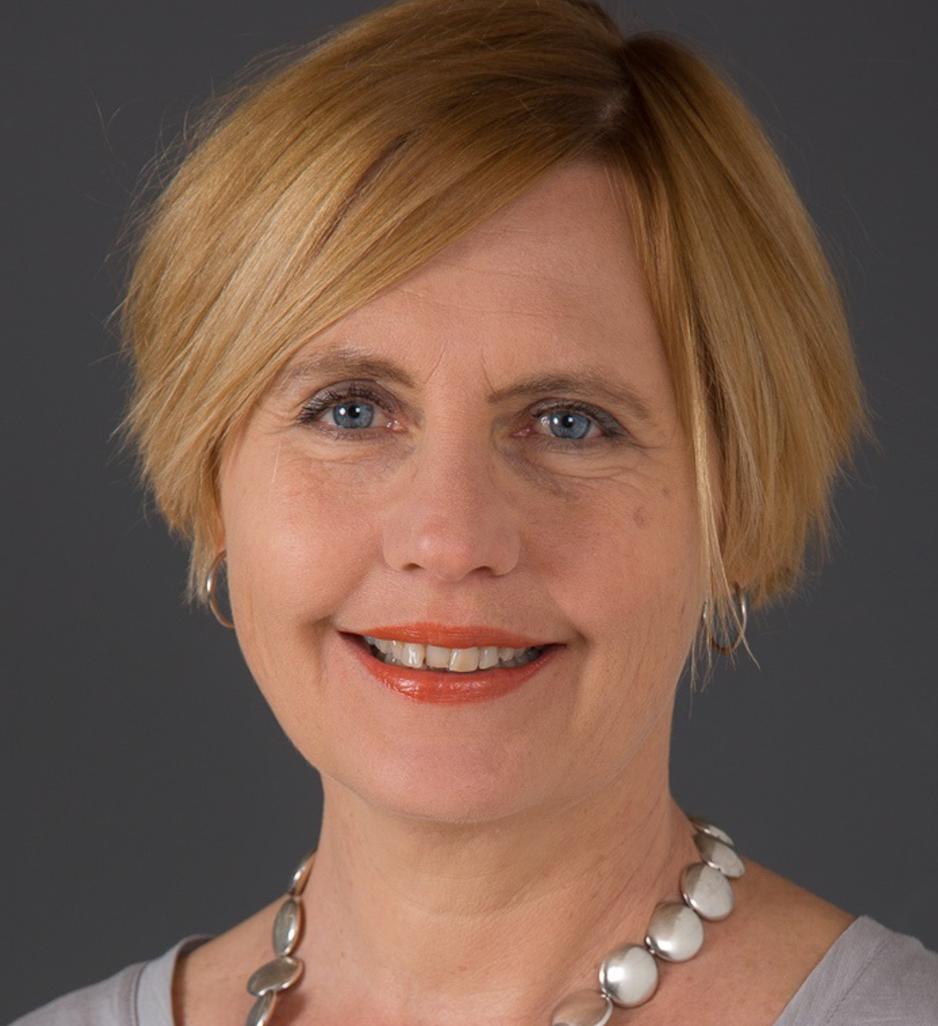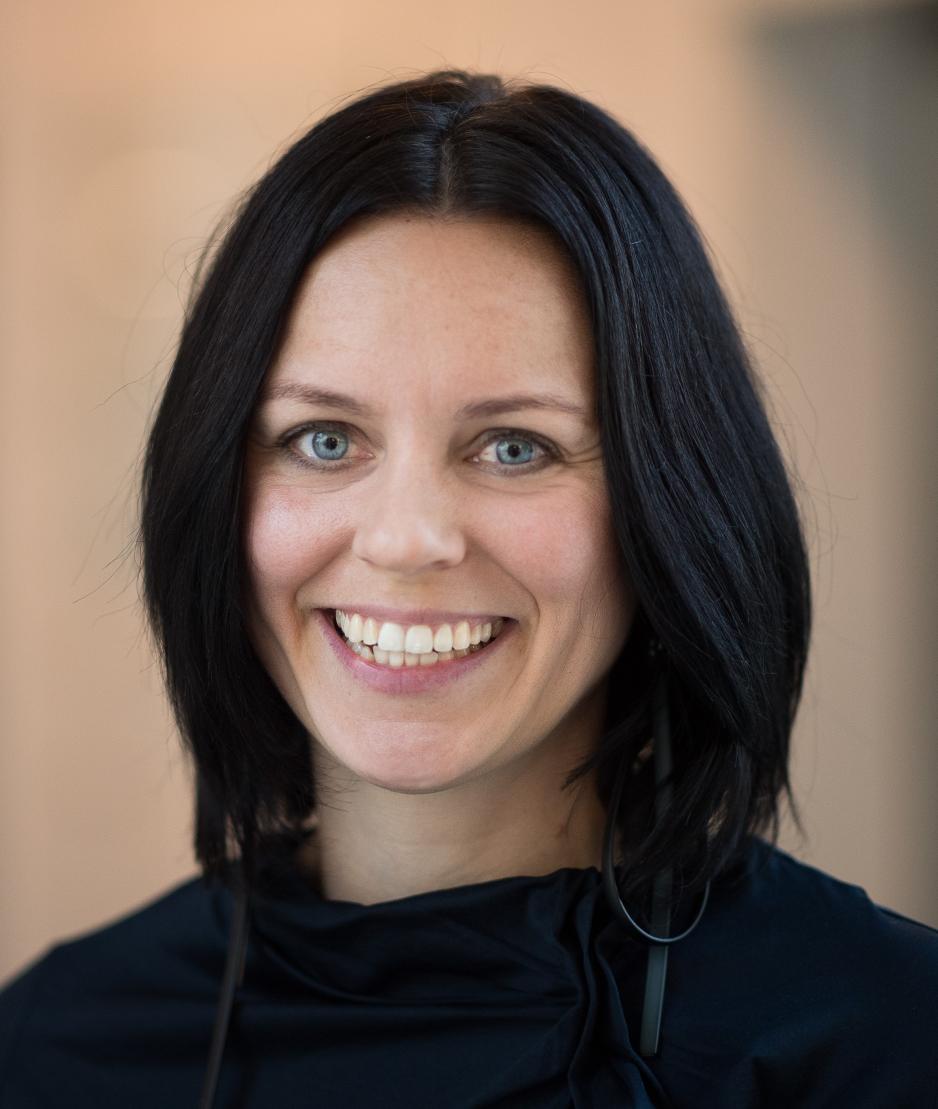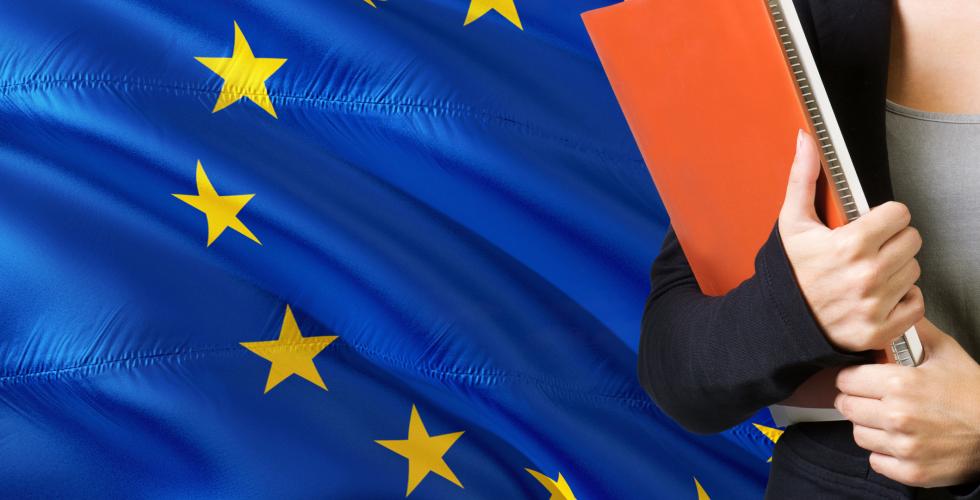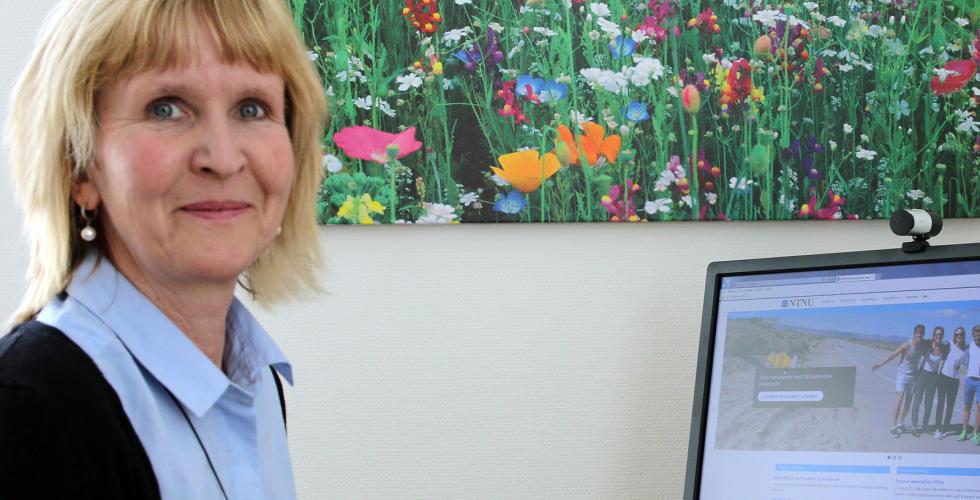NEW REPORT: Lack of resources for promoting gender equality
A new survey report reveals that many Norwegian research institutes lack action plans and that no universities are satisfied with their efforts to increase ethnic diversity.
The report (in Norwegian only) is a review of how research institutes, universities and university colleges work to promote gender equality and diversity.
Sabina Tica, a doctoral student at the University of Oslo, authored the report, which was commissioned by the Committee for Gender Balance and Diversity in Research (KIF committee).
The report finds substantial differences among the institutions.
“In our response group, it appears that the largest institutions – the universities and to some extent the university colleges – have done more to ‘institutionalize’ their efforts promoting gender equality and diversity. They are more likely to have action plans and/or a gender equality committee, and they dedicate more resources to this work than smaller institutions do,” says Tica.
Read From vision to reality (English summary)

Large variations in resources for gender equality
The KIF committee sent out a survey to human resources directors at 64 institutions and received responses from 48 of them, creating a sample of 18 research institutes, 17 university colleges, 10 universities and 3 institutions of unspecified type.
Their responses reveal disparities in resources spent across institution types. Some differences are likely related to institution size, the report concluded.
“Our response group budgets relatively little for promoting gender equality and diversity. For example, about half the institutions reported dedicating less than NOK 200 000 per year to these efforts,” the report’s author explains.
“Smaller institutions have fewer resources to promote gender equality and diversity, and hence fewer positions dedicated to that work,” she adds.

At the other end of the spectrum, the survey found that the universities, by far the largest of the institutions, often set aside over NOK 2 million per year. According to Tica, differences in size and available resources can lead to needs for different measures.
Mari Teigen, the Director of CORE - Centre for Research on Gender Equality, believes resources are important but that the essential thing is for institutions to make active, targeted efforts to promote gender equality. The scale of resources used is usually a reflection of an institution’s size.
“This is why I believe that variations in resource use among the large institutions can indicate the level of priority given to gender equality work. What’s important here is the ability to identify problems and introduce measures to solve them,” says Teigen.
Fewer than half had an action plan
The report highlights action plans as an important tool for promoting gender equality and diversity at research and higher education institutions. The findings indicate that an institution-wide action plan was in use at 38 per cent of the research institutes, 76 per cent of the university colleges and 80 per cent of the universities.
This is where the research institutes differ greatly from the university colleges and universities:
“Over 60 per cent of the research institutes lacked an action plan for gender equality and diversity when the survey was conducted,” reports Tica.
“By way of comparison, 20 per cent of universities and 25 per cent of university colleges in the sample had no action plan.”
State Secretary Aase Marthe Johansen Horrigmo of the Ministry of Education and Research says it is important to hold the institutions accountable:
“We expect all public enterprises under the Ministry of Education and Research to strive for gender equality and diversity. The Ministry follows this up in our administrative dialogue.”

“Horizon Europe, the new EU research and innovation framework programme, requires every research-performing institution to have its own action plan for promoting gender equality and diversity. This survey shows that research institutes in particular still have a long way to go,” says Johansen Horrigmo.
“I’m glad to see the KIF committee actively encouraging this work on action plans and I hope the institutions make use of their expertise,” she adds.
In Mari Teigen’s experience, what works best is a combination of integrating gender equality inside an organization and making sure the responsibility of promoting gender equality is clearly defined and supported by the organization’s leadership.
“We pointed out in the Official Norwegian Report ‘Structure for Equality’ that having an integration strategy without officially defining and supporting the responsibilities can result in gender equality becoming everyone’s job but no one’s responsibility.
“What also makes a difference is where these responsibilities are rooted in management. The closer to the key decision-making centres, the better,” Teigen believes.
Additional requirements for research institutes
From 2022, any institution seeking research funding from the EU framework programme must have implemented an action plan.
“Now that Horizon Europe requires an institution-wide action plan for funding eligibility, there is reason to believe more institutions will feel an incentive to prepare and implement action plans,” notes Tica.
Ingeborg Palm Helland, a research director at the Norwegian Institute for Nature Research (NINA) and a KIF committee member, was in the working group for the survey project. She agrees that the EU requirement could result in more action plans being drawn up.
“The survey clearly shows a large difference between research institutes and the university and university college sector. The institutes are a broad group encompassing everything from very large bodies to relatively small companies. Many are quite small and may not have a position dedicated to gender equality efforts, as the universities often have,” says Palm Helland.

She adds that this is not surprising.
“Until only recently, there have been no clear requirements for promoting gender equality at research institutes, which face a different economic reality and stiff competition. Their basic allocations are small and their main focus is generating external revenue.”
Anything not mandatory – such as gender and diversity efforts – can become an extra administrative burden that gets less priority, according to Palm Helland.
“But this does not necessarily mean that the research institutes are far behind when it comes to actual gender equality. As a rule, they have permanent researcher positions and often clearly defined career tracks, which can be important conditions for achieving gender equality in the labour market,” she points out.
More money does not always buy gender equality
Mari Teigen also emphasizes that at smaller institutions, there is no automatic correlation between resource spending and active promotion of gender equality and diversity.
“For many institutions, the most essential step will be identifying and analysing the problem. Spending resources and having an action plan can be indicators that these efforts are being made, but are not the decisive factor,” she says.
According to Teigen, there may be a number of explanations for having no action plan.
“It’s more significant when a large institution has no action plan. It’s an issue of resources, and the largest institutions likely have the greatest need to prove legitimacy by having a plan in place.
“In any case, I believe it is vital to place the responsibility for promoting gender equality and diversity at the management level. This signals that it is a priority issue and employees will know where to turn if gender and diversity problems arise,” she advises.
Palm Helland emphasizes what is at stake if research institutions do not approach gender equality efforts more systematically moving forward.
“Improving gender equality and diversity makes the institutes better – not only by preventing discrimination and injustice but also by raising the quality of research. The research institute sector carries out a substantial share of the applied research in Norway, and given the massive transition to a green society we're embarking on, it is important that this research also incorporates equality perspectives.
“I believe the time has come for the research institute sector to realize the value of working with action plans and take a more systematic approach to gender equality efforts. The institutes themselves and the KIF committee both need to take more responsibility for this,” says Palm Helland.
Managers looking to learn more about gender equality and diversity
Across the institutions that responded, expertise in gender equality and diversity counts for little in management hiring and leadership development. Less than 20 per cent of respondents (only 8 of 45, mostly representing universities) reported that expertise in gender equality and ethnic diversity was a requirement when hiring managers at their institution.
“A number of respondents expressed a need to raise their managers’ expertise in gender equality and diversity. They are calling for courses for themselves and other managers,” says Sabina Tica.
Teigen believes knowledge about gender equality is important for several reasons:
“Firstly, it’s key to have the expertise to see the real situation that each section of the organization is facing. To me, collecting good statistics and analysing them well is the most important skill. Secondly, it is vital to have knowledge about which measures could be suitable.
“But general expertise on gender equality measures and how to implement them must be tempered with local knowledge – there is no ‘one size fits all’. But that doesn’t mean gender equality work should be left to random tactics,” cautions Teigen.
Respondents felt that gender equality expertise needs to be incorporated in leadership development to ensure gender balance and diversity at institutions. One respondent at a university college wrote:
“This focus [on gender and diversity expertise] needs to be a common theme in all our activities – and not just an issue to be raised now and then, for example in the annual reports. It needs to be part of the equation from the very start, in the job announcement, how we formulate the announcement, how we weight the criteria, how we ensure diversity in the departments and in our training.”
Dissatisfied with their own diversity efforts
The survey report also reviews how the various institutions evaluate their own efforts to promote gender equality and diversity.
“More than half the institutions in our response group assessed their own work on gender equality, diversity and sexual harassment as ‘good’, as opposed to ‘average’ or ‘weak’,” reports Tica.
But one area stood out in particular: ethnic diversity.
“None of the respondents from universities rated their ethnic diversity efforts as ‘good’. And less than half of the surveyed institutions overall rated their ethnic diversity work as ‘good’,” notes Tica.
“I find it especially interesting that the universities, which spend the most resources on promoting gender balance and diversity, are less likely to self-assess as ‘good’ in this area,” she adds.
This is where the research institutes set themselves apart from the university and university college sector.
The survey shows that the research institutes are very pleased with their efforts, according to NINA’s Palm Helland.
“It could be, of course, that we at research institutes feel we’re doing better than we actually are, but it may also be that we have a long record of integrating our efforts in this area into other work, perhaps because the institutes often follow up their personnel better than the university and university college sector does.”
Tica points out that there is some uncertainty in the report’s statistics:
“This is on a very general scale, with only one representative from each institution, and the survey did not define what constitutes ‘good’, ‘average’ or ‘weak’.”
“The responses may also reflect institutions’ awareness that, for example, Norwegian-born researchers with an immigrant background are underrepresented among research staff,” says Tica.
Since there are still relatively few Norwegians with an immigrant background in the age group for permanent academic positions, Mari Teigen believes this will become more of an issue in the years ahead.
Little affected by the pandemic
It appears the COVID-19 pandemic has had little effect on institutions’ planned gender equality and diversity activities, Tica says.
“But we see that institutions are particularly aware of the difficult circumstances of international researchers and students, as well as the risk of increased gender gaps resulting from the pandemic.”
Tica stresses, however, that the survey was sent out in the early days of the pandemic, and to institutions’ central administrations.
“In future surveys, it will be important to explore this question in more depth, and perhaps in particular learn more about the pandemic’s different impacts on various groups of staff and students,” says Tica.
“This report is a first step in compiling data on how research and higher education institutions are working to promote gender balance and diversity,” summarizes Tica.
Is there more you can tell us about how the survey’s sample size affects the findings?
“Despite this survey’s relatively high response rate, the statistics do not allow us to generalize the findings to all research and higher education institutions,” she says.
“Yet the response group represents a large share of those we seek to study. So the survey tells us with fairly high certainty something about how they organize their efforts.”
When it comes to research institutes, there is more room for variation, since the survey was sent only to a selected number of research institutes, and their response rate was lower.
“So we have less basis to comment on the research institutes’ efforts,” Tica concludes.
Translated by Walter Gibbs and Darren McKellep.
The report is a survey-based review (in Norwegian only) of how research institutes, universities and university colleges work to promote gender equality and diversity. It was authored by Sabina Tica and commissioned by the Committee for Gender Balance and Diversity in Research (KIF committee).
Read From vision to reality (English summary)
The report was presented via webinar. The KIF committee initiated the survey to obtain more data and review the current status of efforts to promote gender balance and diversity in research, for use in its future work.
The KIF committee designed and sent out the survey to a variety of research and higher education institutions. The responses form the empirical basis of the report.
The survey was sent to HR heads at 64 institutions, of whom 48 responded. The sample consists of 18 research institutes, 17 university colleges, 10 universities and 3 unspecified.
Some of the main findings:
- The responding institutions dedicated relatively little resources to promoting gender equality and diversity.
- The proportion of institutions that had drawn up an institution-wide action plan for gender equality and diversity: universities (80 per cent), university colleges (76.5) and research institutes (38.9).
- Gender was the discrimination basis that was included in every institution’s action plan, but disability, ethnicity and sexual harassment were often incorporated as well.
- Just 25 per cent of responding institutions with an action plan (7 of 28) had drawn up a department- or faculty-level action plan.
- Roughly half of institutions (23 of 45) had a coordinating group for equality and diversity or a gender equality committee.
- Expertise in gender equality and diversity is seldom a requirement in management hiring and leadership development at the institutions responding.
- Analysis shows that among the respondents, the universities had institutionalized their gender and diversity efforts to a greater extent than the university colleges and research institutes.
- No respondents from the universities characterized their efforts on ethnic diversity as ‘good’.
- Institutions without an action plan more often assessed their work on ethnic diversity as ‘good’ compared to those with an action plan.
- Only 10.2 per cent of respondents felt the pandemic had caused delays in planned efforts to promote gender equality and diversity at their institutions.
- Among the institutions responding, the majority felt that international students and researchers were the most vulnerable group during the pandemic, followed by other at-risk groups. Respondents also expressed concern about the pandemic’s impact on women’s working conditions.
The European Commission has indicated that from 2021 onwards it will require all recipients of Horizon Europe funding to have an action plan for promoting gender equality.
Read more: Laws and regulations and Action plans for equality and diversity





